|
Laying your turf
Laying purpose grown cultivated turf is hard work but it will enable you to enjoy a lawn of instant beauty and maturity
without the inconvenience, wastage or delays associated with seeding.
Ground Preparation
Proper ground preparation is essential for the establishment and future well being of your new lawn. Inadequately
prepared ground will never produce the best results. Existing turf should be removed by slicing beneath the grass with a
spade, for large areas consider hiring a purpose designed turf cutter. Consideration should be taken regarding the
position of trees, shade and drainage. For instance poorly drained or wet ground may require the installation of drains
leading to a soakaway area.
Leveling the ground
The ground must be flat and smooth. When turf is laid, it is pliable and will follow any ground contours. Therefore it is
essential to level the ground properly to avoid problems when the lawn is mown because if the ground is bumpy or too
soft you would end up cutting the grass unevenly.
Preperation is hard work. Below is some advice on how to save time and make your job less difficult.
Quicklawn Cultivated Turf
Quicklawn Cultivated turf is harvested in 16" easy lay rolls which can now be ordered online to anywhere in the UK. To find
out more about the quality and specification of our turf click here
How much turf will I need to buy?
Accurately measure the length and width of the area you want your new lawn, multiply these together to give the area.
We have two turf calculators which will enable you to easily convert your measurements into square metres if you have
measured in either feet or in yards.
Quicklawn turf is harvested in square metres.
Step by step guide to laying a lawn
|
1. Clear the area of any debris.
Skim off any existing grass from the surface. For larger areas you may wish to hire a powered turf cutter/lifter, these are avaiable from most tool hire companies.
* Some old lawns may have become infested with couch grass, dockens or dandy-lions, it is best to spray off these weeds as in certain conditions they may re-grow through your new lawn. For further advice contact a local garden centre or landscaper. |
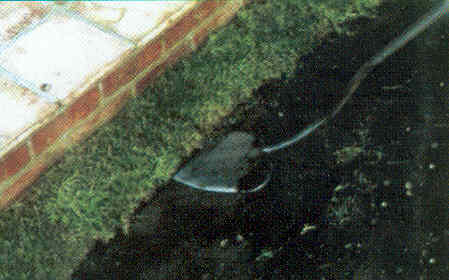
|
|
2. In a smaller garden the soil con be forked over.
This will loosen the soil which may have become stiff due to compaction. In larger areas it may be necessary to rotovate the area to break down the soil allowing for ease of levelling and to provide a good sub soil structure for the turf. Mix in an inch or two of good quality top soil or sharp sand where the soil is heavily clay based. This will make the soil `lighter` and help drainage.
In this picture we see a heavy duty rotovator, best used on large gardens. In certain conditions it may take two or three passes to produce a managable tilth.
|
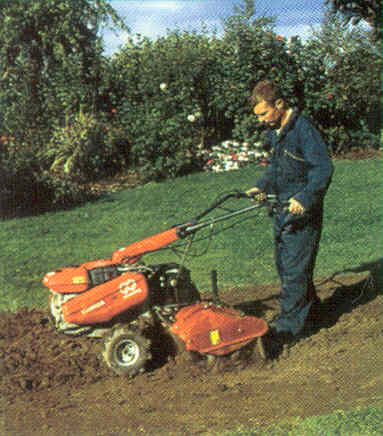
|
|
3. Once an approximate level has been achieved we need to grade the surface.
The ground should then be raked to produce a smooth even surface. The teeth of the rake will breakdown the soil into smaller particles (tilth). Try raking high spots into low spots to even the surface. The rake can be turned upside down then the straight edge can be used to `screed` the soil.
Lightly roll or tread the surface by foot to reveal any soft patches which can later be raked level.
Remember to keep the soil high enough close to kerbs and paths,so that when the grass is cut you do not clip anything with your mower.
|
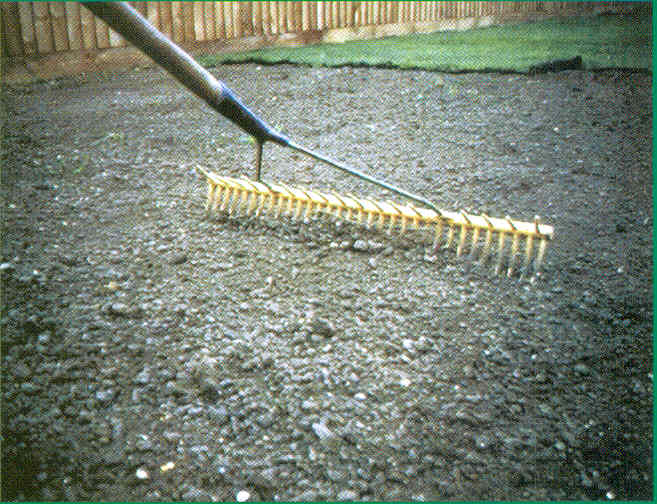
|
|
4. Lay your border first around the outside of your lawn.
This means any cuts will be on the inside of the border as they are more prone to drying out in certain conditions. Lay straight for linear lines and remember turf can be `bent` to for gentle radius curves.
Try not to walk directly on the prepared soil or newly laid turf. Use builders boards or planks to work from.
Look for the longest straight line to follow and start by placing boards on the border turf, work from the boards laying the turf full length of the lawn. Next place the boards on the turf you have just laid, work from them as you lay the next line of turf back down the lawn. (this will create a cosmetic stripe which will later mow away). Butt adjoining ends and edges against each other keeping all joints as tight as possible. Do not overstretch turf, any `cuts ` may be done using a half moon lawn edger or sharp knife.
|
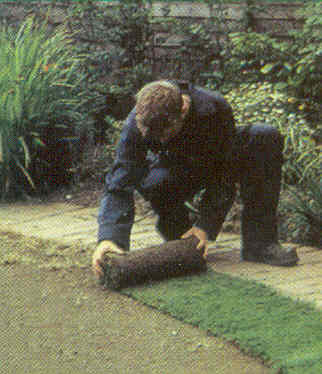
|
|
5. Water the new lawn as soon as possible.
Check that the water has penetrated through the turf and onto the soil below. Too little water will only freshen the appearence of the grass. With plenty of water the roots will be attracted downwards and will anchor the turf to the soil, hence the phrase `rooting`.
In summer months our turf will root and establish very quickly, longer in cooler winter months.
You may mow your new lawn as soon as the turf has rooted. Check by lifting a small corner of turf to check for white root hairs.
Start mowing on a higher setting to `top` the grass leaves, try to remove clippings as they can smother the grass underneath.
|

|
|
6. The Finished Lawn.
Do not mow the lawn when the grass leaves are wet as it is very difficult to obtain a clean `cut`.
Never cut off more than one third of the leaf length as it will cause `stress` to the grass plants.
Do not walk on a lawn with a heavy white frost as it will damage the leaves and form brown scorch marks.
Most important of all ENJOY your lawn !
|
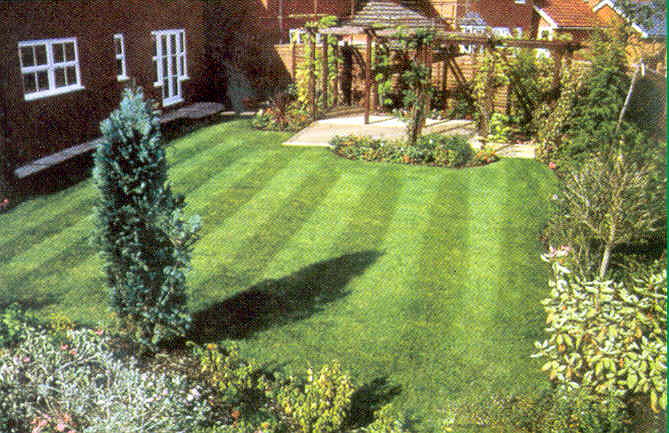
|
|